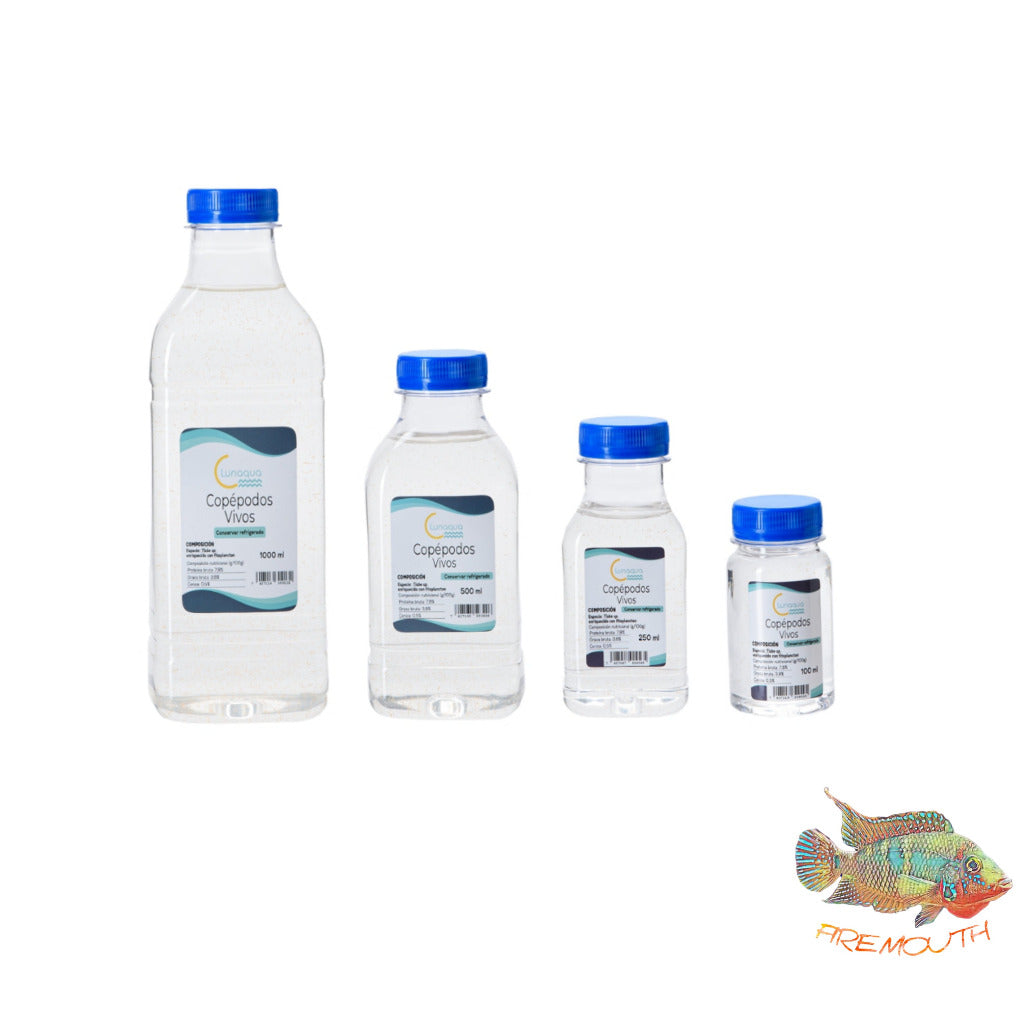Thisbe copepods
Thisbe copepods
Couldn't load pickup availability
General shipping information
General shipping information
SHIPPING :
Orders are generally shipped within 24/48 business hours with a shipping agency.
*Orders DO NOT go out on Fridays to avoid them being stuck all weekend at the transport agency.
You can check the status of your order by sending us an email to firemouthaquaristic@gmail.com
Shipping price:
SPAIN PENINSULA:
- NACEX 24/48H - €5.95 | FREE ON ORDERS + €60
- NACEX SHIPPING LIVE ANIMAL 24H €15 | FREE ON ORDERS +150€
- NACEX HEAVY DELIVERY - €9 | €15 depending on product
- PICKUP FROM WAREHOUSE (ONLY FOR ALICANTE) - €0
ISLANDS, CEUTA AND MELILLA
We use the Correos parcel service with a flat rate of €22
However, write to us and tell us what you are interested in because if it is a smaller package, the costs will be much cheaper.
You only pay the exact Post Office rate
Write to us if you have questions
EUROPE / EUROPE
We use the Correos parcel service with a flat rate of €45
However, write to us and tell us what you are interested in because if it is a smaller package, the costs will be much cheaper.
We use the parcel service of Correos with a flat rate of € 45
However, write us and tell us what you are interested in because if it is a smaller package, the costs are much cheaper.
Fish Shipping Information ONLY
Fish Shipping Information ONLY
**Only valid for Spain PENINSULA
Shipping fish costs €15 (or free from €150.00) and is sent via urgent NACEX , delivering the package before 7pm.
You can also choose to pick it up at the agency first thing in the morning on
day delivery is scheduled, in this case, please write to us once the order has been placed at 664373985.
Once the package arrives you will have one hour to acclimatize and resolve any incidents.
of the animal, if it is not done in this way the right to claim the animals will be lost.
If you want to find a greater variety of fish, you can request to join the WhatsApp offers group where we will share a super large list of fish in which you will find a great variety of fish for very attractive prices.
Thisbe Copepods
Living benthic copepods Thisbe sp. in bottle.
Laboratory grown and fed exclusively with phytoplankton.
Natural predator of dinoflagellates.
DESCRIPTION
Genre: Thisbe
Animalia Kingdom
Phylum: Arthropoda
Subphylum: Crustacea
Class: Maxillopoda
Subclass: Copepoda
Order: Harpacticoid
General characteristics
These small crustaceans constitute more than 70% of the zooplankton components in all seas and are free-living organisms.
Its size ranges between 0.2-2.5mm.
They are capable of swimming but due to their small size they cannot define their own destiny and are carried away by water currents, which is why they are part of the plankton.
They feed on phytoplankton (microalgae) and serve as food for organisms at higher trophic levels, including, among others, fish.
They have benthic habits, which allows them to be kept at high densities
High reproductive potential (high fertility and short generations)
Its characteristic zig-zag movement is an important visual stimulus for many fish.
They reproduce sexually (separate sexes) and go through six nauplius larval stages and five copepodite stages before molting into adults.
Nutritional value
Copepods are the organisms that have given the best results in feeding fish larvae of many species in aquaculture, above brine shrimp or rotifers. This is due to the high levels of polyunsaturated fatty acids such as DHA, EPA or arachidonic acid. The level of DHA in wild copepods can be up to ten times higher than in enriched Artemia. They do not need to be enriched like other organisms (Artemias or rotifers) to have nutrients, innately they already contain a high and optimal nutritional quality
They have high levels of protein (42-52%) with an adequate amino acid and fatty acid profile. It is important what they are fed to have the appropriate nutritional profile for the purpose we pursue.
Advantages of copepods as food
Enhances the natural color of fish and crustaceans.
Strengthens the body's immune system.
They are especially useful with some aquarium inhabitants who are more sensitive to their diet, either because they are sick or because they do not accept inert food.
It has been shown that copepods in larval culture of marine fish ensure normal development with improvements in growth and survival, considerably reducing diseases, malformations and abnormal pigmentation.
As it is benthic and therefore attaches itself to the substrate it finds (rocks, glass, bottom, etc.), it facilitates the feeding of slow-swimming fish such as Synchiropus.
When to use copepods and why
They are an excellent source of food for somewhat more delicate fish: corals and other invertebrates such as anemones, fish larvae, seahorses, mandarin fish and Anthias fish.
If our goal is to create more zooplankton in our aquarium, we will have to add them at night so that they are not eaten immediately after adding them.
They are the best option to restore appetite in sick or non-eating fish, especially mandarins, pipefish, seahorses and fish that do not accept inert food.
They feed on aquarium detritus, microalgae, crushed feed,…
Always add the contents of the bag to the end opposite the water outlet of the tank.
Share it with whoever may be interested
5.0 / 5.0
(1) 1 total reviews

Copepodos Tisbe

